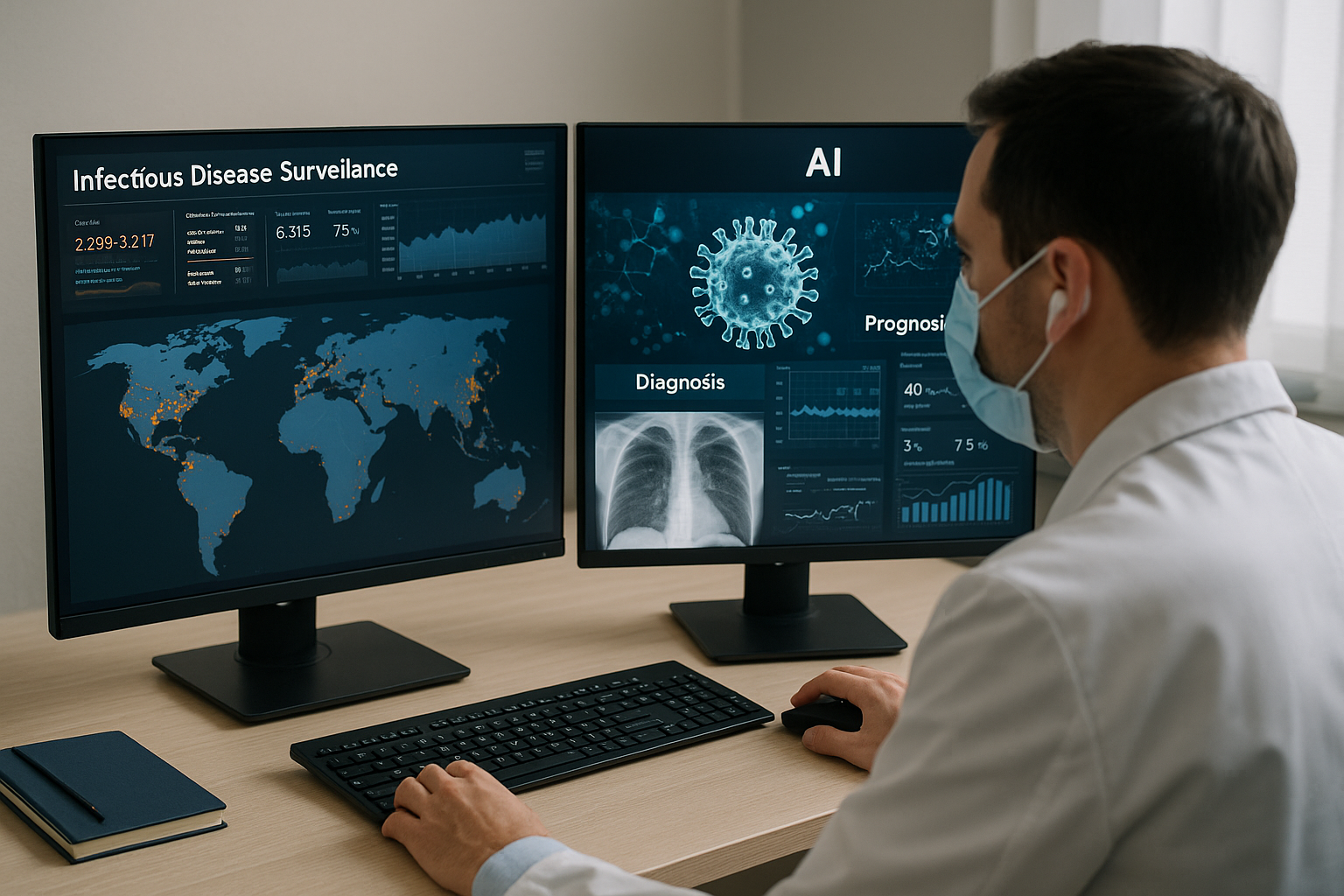How AI can predict, diagnose and track infectious outbreaks in real time
ML-driven surveillance systems can flag early signals of disease outbreaks by detecting non-linear trends and hidden correlations in data streams. For instance, models trained on environmental conditions like temperature and rainfall have demonstrated efficacy in predicting vector-borne diseases, such as dengue. These applications could be particularly valuable in low- and middle-income countries (LMICs), where infrastructure for early detection is limited.

A new review published in Viruses explores the transformative potential of machine learning (ML) and artificial intelligence (AI) in the surveillance, diagnosis, and prognosis of infectious diseases. Titled "Machine Learning and Artificial Intelligence for Infectious Disease Surveillance, Diagnosis, and Prognosis", the paper delivers a comprehensive analysis of how these technologies can reshape public health systems in the face of ongoing and future pandemics.
The research systematically dissects the role of ML and AI across three key domains: early detection and surveillance of emerging infectious diseases, clinical diagnostics and decision support, and prognostic modeling to predict disease outcomes. This integrative approach sets a new benchmark in understanding how data-driven frameworks can be deployed to improve epidemic response strategies globally.
How can machine learning enhance disease surveillance and outbreak detection?
The study begins by establishing the crucial role of ML in public health surveillance. It identifies that early warning systems for infectious diseases often rely on fragmented datasets, ranging from climate and mobility data to socio-economic and demographic inputs, that traditional epidemiological models struggle to integrate. ML offers a solution by processing these multi-modal datasets with high speed and precision.
The authors emphasize that ML-driven surveillance systems can flag early signals of disease outbreaks by detecting non-linear trends and hidden correlations in data streams. For instance, models trained on environmental conditions like temperature and rainfall have demonstrated efficacy in predicting vector-borne diseases, such as dengue. These applications could be particularly valuable in low- and middle-income countries (LMICs), where infrastructure for early detection is limited.
Furthermore, real-time mobility data and digital exhaust from internet activity, such as search engine queries and social media posts, are becoming integral to outbreak forecasting. ML algorithms can sift through these dynamic datasets to track changes in population behavior, symptom reporting, and disease sentiment, offering authorities a lead time to implement containment measures.
However, the authors caution that the success of such systems is contingent on high-quality input data. Issues like incomplete datasets, privacy concerns, and lack of standardization can undermine the reliability of predictions. Still, the study finds compelling evidence that ML-powered surveillance can outperform conventional models, especially in scenarios with rapidly evolving pathogens like SARS-CoV-2.
What role does AI play in diagnosis and risk stratification?
Moving from detection to diagnosis, the study explores how ML algorithms can optimize the clinical workflow. ML models can integrate complex diagnostic inputs, including clinical history, blood markers, imaging results, and symptoms, to assist healthcare providers in triaging and diagnosing patients more accurately and efficiently.
The authors highlight that ensemble learning methods, particularly those using deep learning architectures such as convolutional neural networks (CNNs), random forests, and support vector machines (SVMs), have shown promising results in identifying disease severity and stratifying patient risk. These models not only reduce the time required for diagnosis but also minimize human error, especially under the pressure of high caseloads during pandemics.
Importantly, the paper advocates for the use of Explainable AI (XAI) to ensure transparency in clinical decision support tools. By offering visual or numerical explanations for predictions, XAI helps clinicians validate and trust the output of ML systems. This is essential for real-world application, where accountability and interpretability are critical.
The research also emphasizes the need for AI tools to complement, not replace, human decision-making. While algorithms can provide data-driven insights, final diagnostic decisions must rest with trained clinicians who can interpret predictions within the broader clinical context.
How are prognostic models shaping the future of personalized medicine?
The study also focuses on prognosis: forecasting disease progression and outcomes in infected individuals. ML models trained on historical and real-time patient data can identify biomarkers and clinical patterns associated with severe disease, helping clinicians anticipate complications and personalize treatment plans.
This feedback mechanism between diagnosis and prognosis is framed as a continuous loop facilitated by reinforcement learning, wherein the outcomes of previous cases are used to refine future predictions. The study underscores that such iterative learning is pivotal for the evolution of precision medicine, particularly for diseases with variable clinical presentations.
The authors point to the integration of patient-specific features like age, co-morbidities, and immune response markers into ML models, which enhances the precision of prognostic predictions. Tools like SHAP (Shapley Additive exPlanations) and Grad-CAM (Gradient-weighted Class Activation Mapping) are noted for their contribution in interpreting model outputs at a granular level, making them valuable in tailoring patient care.
- READ MORE ON:
- artificial intelligence in healthcare
- machine learning in infectious disease
- AI disease surveillance
- infectious disease prognosis tools
- AI for pandemic prediction
- machine learning in public health
- how AI is transforming infectious disease surveillance
- machine learning models for outbreak forecasting
- explainable AI tools for infectious disease management
- healthcare data science
- FIRST PUBLISHED IN:
- Devdiscourse










